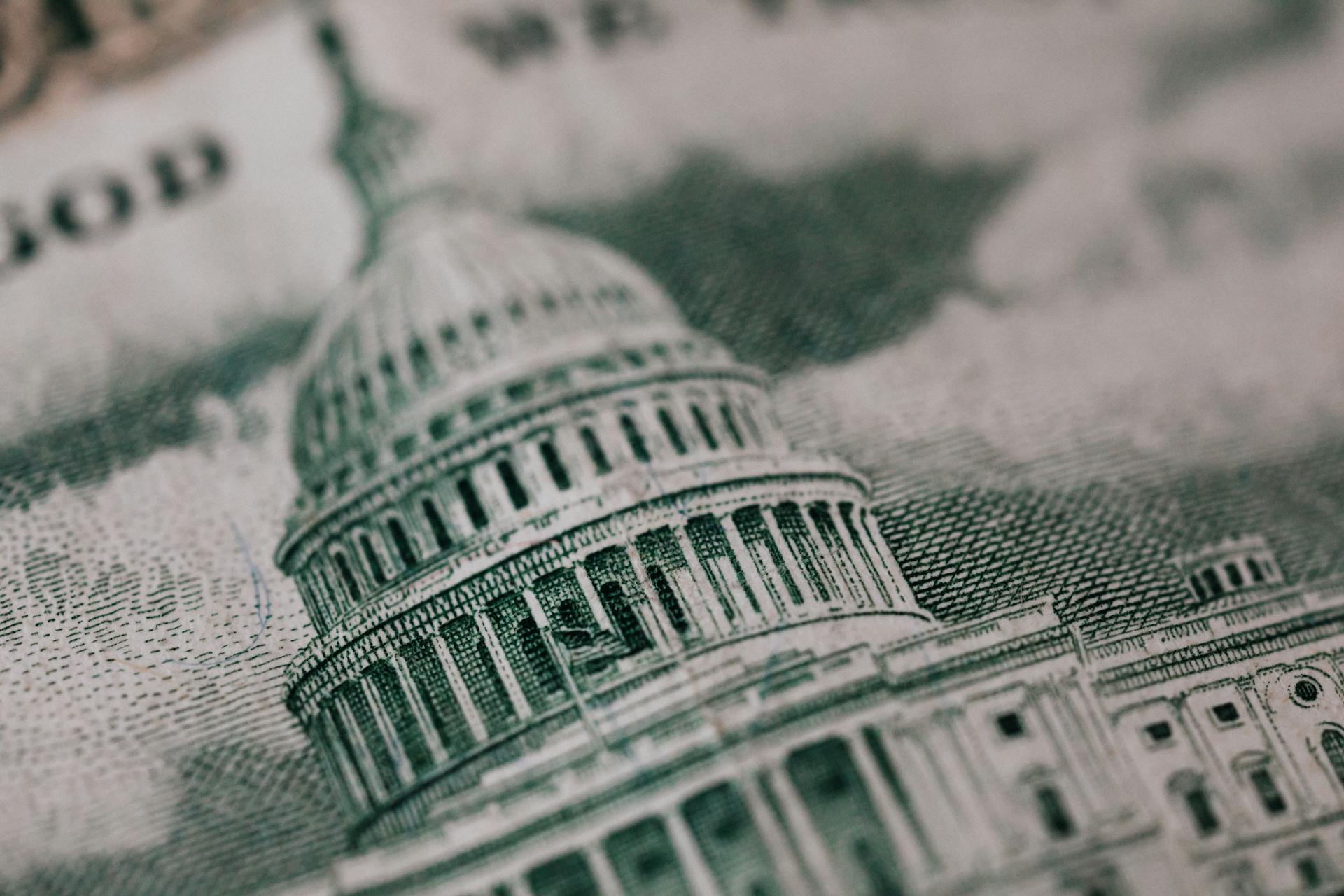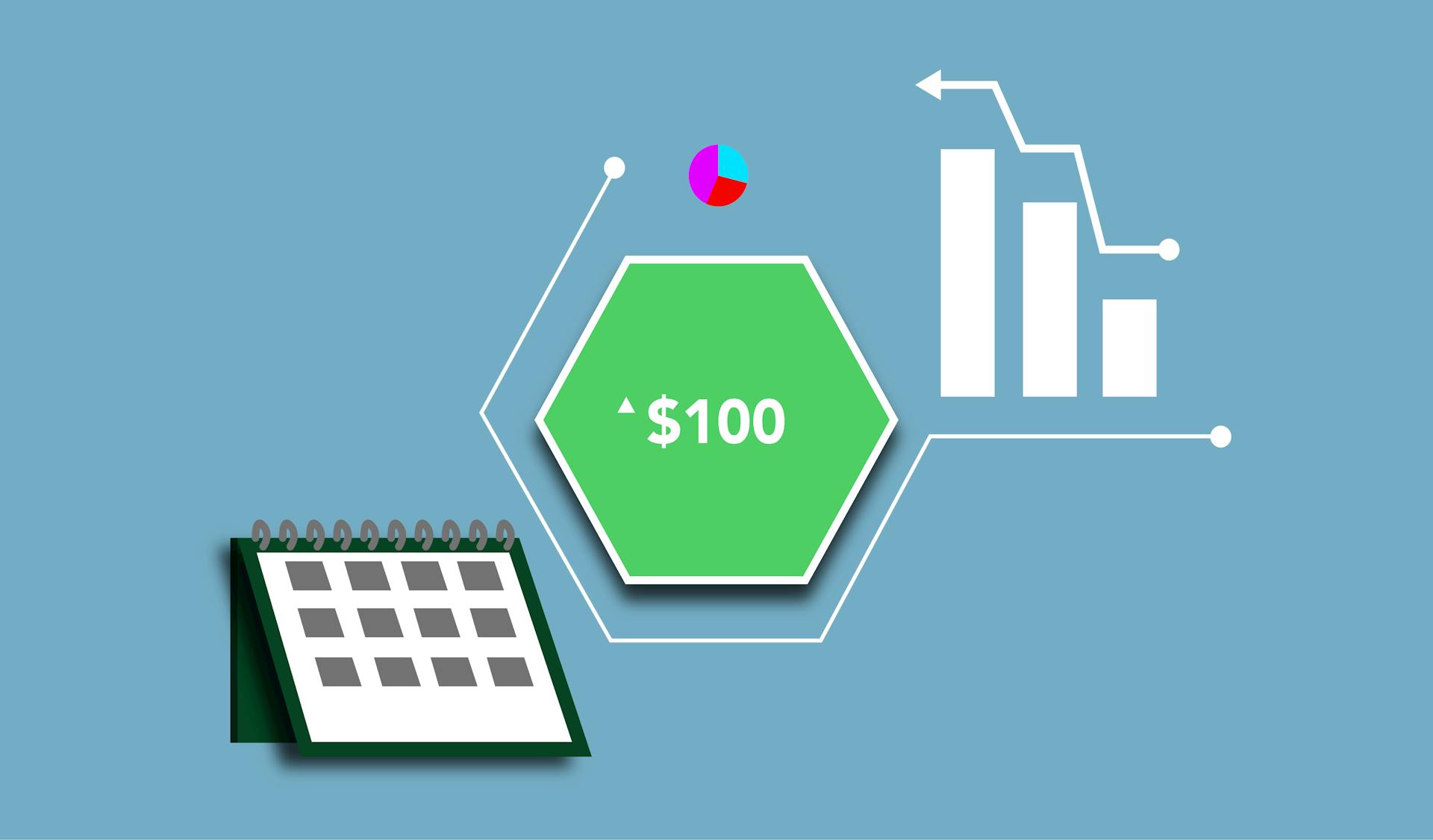
T-Bills are a type of short-term government security that offers a low-risk investment option.
They are issued by the government to raise funds for various purposes, including financing its budget deficit.
T-Bills are available in different maturities, ranging from a few weeks to 52 weeks, which allows investors to choose the term that suits their needs.
Investors can buy T-Bills directly from the government through a process called auction, where they bid on the amount they want to invest.
The minimum investment amount for T-Bills is $100, and the maximum amount varies depending on the investor's status, such as individual, corporate, or institutional.
Investors can also invest in T-Bills through a broker or a bank, which can provide additional services such as research and portfolio management.
T-Bills are considered a very liquid investment, meaning that investors can easily sell them before maturity if needed.
The returns on T-Bills are fixed and determined at the time of auction, and they are usually higher than other low-risk investments, such as savings accounts.
T-Bills are exempt from state and local taxes, which can increase the investor's returns.
A fresh viewpoint: Us Treasury Bill Auction
T-Bills: Advantages and Disadvantages
T-bills are considered one of the safest investments available, backed by the full faith and credit of the U.S. government.
One of the main advantages of T-bills is that they have zero default risk, meaning you are not likely to experience losses on your initial investment.
T-bills offer a low minimum investment requirement of $100, making them accessible to a wide range of investors.
They also offer the ability to buy and sell T-bills with ease in the secondary bond market.
However, T-bills offer low returns compared with other debt instruments.
Their low-risk nature also means they generally provide lower yields than other investments.
T-bills have interest rate risk, so their rate could become less attractive in a rising-rate environment.
Here are some key advantages and disadvantages of T-bills:
- Zero default risk
- Low minimum investment requirement
- Ability to buy and sell in the secondary market
- Exempt from state and local income taxes
- Interest income is subject to federal income taxes
- Low returns compared with other debt instruments
- Interest rate risk
- No interest payments leading up to maturity
- Can inhibit cash flow for investors who require steady income
Investing in T-Bills
You can buy T-bills in electronic form from a brokerage firm, which may cost a small fee, or directly from TreasuryDirect, the platform of the U.S. Treasury.
To buy T-bills directly from TreasuryDirect, you'll need to gather information such as your Social Security number or taxpayer identification number, a U.S. address, and checking or savings account numbers.
You'll then create an account on TreasuryDirect.gov, select the account type, and enter your personal information.
Treasury bills can be bought in different types, including 14-day, 91-day, 182-day, and 364-day treasury bills.
The RBI auctions treasury bills every week through non-competitive bidding, allowing retail and small-scale investors to participate.
You can also buy T-bonds directly from the government on Treasurydirect.gov.
To buy T-bonds, you'll need to create an account on TreasuryDirect.gov and follow the steps to purchase your bonds.
A minimum of Rs. 25,000 has to be invested by individuals willing to procure a short-term treasury bill.
The yield on a treasury bill can be calculated using the formula Y = (100-P)/P x 365/D x 100, where Y is the return percentage, P is the discounted price, and D is the number of days.
Here's a breakdown of the different types of treasury bills:
T-Bill Market and Policy
The Federal Reserve's monetary policy plays a significant role in influencing T-bill prices. Many factors can influence prices, including macroeconomic conditions, monetary policy, and supply and demand for Treasurys.
The Federal Reserve's decision to increase or decrease the federal funds rate affects T-bill yields. This rate is the interest rate that banks charge each other for lending money from their reserve balances overnight.
Here's a summary of the relationship between the Fed funds rate and T-bill yields:
T-bills are considered one of the safest investments available, backed by the full faith and credit of the U.S. government.
Federal Reserve Policy
The Federal Reserve Policy plays a crucial role in influencing the T-bill market. The Fed's monetary policy decisions can cause T-bill prices to fluctuate.
The federal funds rate, set by the Fed, affects the interest rates on T-bills. It's the rate banks charge each other for lending money overnight.
When the Fed increases the federal funds rate, T-bill yields also go up. This makes existing T-bills less attractive to investors, who are likely to sell them.
On the other hand, when the Fed decreases the federal funds rate, T-bill yields go down. This makes existing T-bills more attractive to investors, who are likely to buy them.
Here's a simple table to summarize the relationship between the Fed funds rate and T-bill yields:
Understanding the impact of the Fed's monetary policy on T-bills can help investors make informed decisions.
The Secondary Market
The secondary market is where the magic happens for T-bills. It's a place where you can buy and sell existing T-bills, making them highly liquid.
The price of T-bills on the secondary market fluctuates considerably, and it's dictated by current auction and yield rates. This means that if auction rates increase, the price of T-bills goes down because the value of the bond's future cash flows is discounted at a higher rate.
You can buy T-bills on the secondary market through depository participant commercial banks or other registered primary dealers, and the security transfer follows a T+1 settlement process. This makes it easy to get in on the action.
As an investor, you can choose to procure T-bills through depository participant commercial banks or other registered primary dealers, making it convenient to invest in the secondary market.
For more insights, see: How Do You Buy Us Treasuries
T-Bill vs. Other Investments
T-bills generally provide lower yields than other investments due to their low-risk nature. This means they might not keep pace with inflation over time.
For a risk-averse investor, T-bills offer steady, albeit typically low, returns. They are useful for preserving capital and maintaining liquidity.
In comparison to other investments, T-bills are considered one of the safest investments available, backed by the full faith and credit of the U.S. government.
Here's a comparison of T-bills with other investments:
Note that while T-bills are risk-free, they are susceptible to inflation risk and interest-rate risk, which could reduce the returns for an investor.
T-Bill Types and Features
There are three main types of U.S. Treasuries: bonds, notes, and bills. Bills mature in less than a year, notes in two to five years, and bonds in 20 or 30 years.
A treasury bill can have a tenure of 14 days, 91 days, 182 days, or 364 days. The face value and discount rate of treasury bills change periodically, depending on the funding requirements and monetary policy of the RBI.
Investors can choose to procure treasury bills through depository participant commercial banks, or other registered primary dealers (PDs), wherein the security transfer follows a T+1 settlement process. Alternatively, many open-ended mutual fund schemes also include treasury bills in their corpus.
Here are the types of treasury bills:
- 14-day treasury bill
- 91-day treasury bill
- 182-day treasury bill
- 364-day treasury bill
The yield rate on a treasury bill can be calculated using the formula: Y = (100-P)/P x 365/D x 100.
Bill Rates
The maturities available for Treasury bills are four, eight, 13, 17, 26, and 52 weeks (alternatively, one through four, six, and 12 months).
If interest rates are expected to rise, longer maturity dates pay more than shorter dates. This is because investors are willing to accept lower returns for shorter-term investments when they think rates will increase in the future.
Longer maturity dates might have lower interest rates if interest rates are expected to fall. This is the opposite of the situation where rates are expected to rise.
The chart of the four-week, six-month, and one-year T-bill yields for the last 10 years shows the fluctuations in interest rates over time.
Check this out: Tbill One Year Rate
Types of Bill
There are several types of treasury bills, and they're classified based on their tenure. The main types of T-bills are the 14-day treasury bill, 91-day treasury bill, 182-day treasury bill, and the 364-day treasury bill.
These different types of T-bills have varying holding periods, but the face values and discount rates change periodically. The RBI influences these changes based on funding requirements and monetary policy, along with the total bids placed.
Here's a breakdown of the different types of T-bills:
- 14-day treasury bill
- 91-day treasury bill
- 182-day treasury bill
- 364-day treasury bill
Features of Bills
T-bills are zero-coupon bonds sold at a discount, and the difference between the purchase price and the par amount is your accrued interest. This means you won't earn interest payments on a regular basis, but you'll receive the full face value when the bill matures.
The minimum investment required for individuals to procure a short-term treasury bill is Rs. 25,000. Any higher investment must be made in multiples of Rs. 25,000.
T-bills don't yield any interest on total deposits, but investors can realize capital gains from such investments as they are sold at a discounted rate in the market. Upon redemption, the entire par value of this bond is paid to investors.
The RBI auctions such securities every week on Wednesday, depending on the total bids placed on major stock exchanges. Investors can choose to procure such government assets through depository participant commercial banks or other registered primary dealers (PDs).
T-Bill and Inflation
Treasurys have to compete with inflation, which means they're not as attractive to investors during high inflation periods.
Inflation erodes the purchasing power of the returns on T-bills, making them less appealing to investors who want to keep up with rising prices.
If a T-bill's yield is lower than the inflation rate, investors can end up with a net loss on their investment.
T-bill prices tend to fall during inflationary periods as investors sell them and opt for higher-yielding investments.
Investors who buy T-bills with a low yield during high inflation periods may regret their decision in the long run.
Check this out: Tbill Yields
T-Bill and Other Debt Securities
The U.S. Treasury issues a variety of debt securities, but Treasury bills are just one of them.
Treasury bills are fixed-term debt, and they are short-term obligations, up to a year.
Treasury notes are medium-term securities, from two to 10 years, offering a longer investment horizon than Treasury bills.
Treasury bonds have the longest time frame, maturing in 20 or 30 years.
The U.S. Treasury also issues Treasury Inflation Protected Securities (TIPS), which are linked to changes in the consumer price index.
Frequently Asked Questions
What is the current T-bill rate?
The current 3 Month Treasury Bill Rate is 4.19%. It's slightly lower than the previous day's rate, but still above the long-term average.
How much does a $1000 T-bill cost?
A $1000 T-bill typically costs around $950 upfront, calculated using the discount rate formula. The exact price may vary, but this is a close approximation of the purchase price.
How much do 1 year Treasury bills pay?
The 1 Year Treasury Rate currently pays 4.17%, a higher yield than the long-term average of 2.98%. This rate is subject to change and may impact your investment decisions.
What is T-bill?
A T-bill is a short-term debt instrument issued by the Government of India, available in three maturities: 91 days, 182 days, and 364 days. It's a popular, accessible form of investment, but is it worth buying?
What is the 30 day Treasury rate?
The 1 Month Treasury rate is currently 4.43%. It has decreased from 5.60% last year.
Sources
- https://www.investopedia.com/terms/t/treasurybill.asp
- https://www.investopedia.com/terms/t/treasurybond.asp
- https://www.mas.gov.sg/bonds-and-bills/singapore-government-t-bills-information-for-individuals
- https://home.treasury.gov/resource-center/data-chart-center/interest-rates/TextView
- https://groww.in/p/treasury-bills
Featured Images: pexels.com


